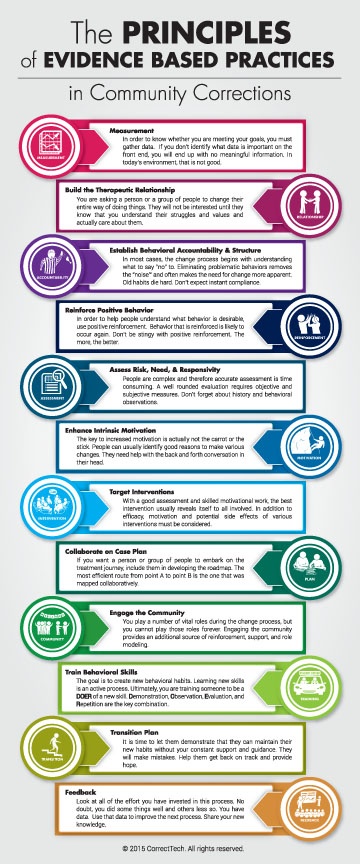- Home
- Software
- Support and Services
- Programs We Serve
- EBP
- Testimonials
- Blog
- About Us
- Resources
People are complex; therefore accurate assessment is time consuming. A well-rounded evaluation requires objective and subjective measures. Don’t forget about history and behavioral observations.
“Actuarial” refers to a set of statistics that calculate probabilities of a specific event. Probability statistics are emphasized because human judgment regarding the risk of future crime is typically quite bad, in part because emotions and other biases get in the way. (See our Risk Principle-Simplified blog for a more detailed discussion.)
Many community corrections professionals cannot wrap their brain around the concept that providing too much treatment can be a bad thing. Even seasoned therapists sometimes feel uncomfortable discussing the Risk, Need, and Responsivity (RNR) principles. Seen as something foreign (it was developed in Canada after all) and unsophisticated, clinicians can fail to see it as a case formulation approach to offenders. They are often adept at discussing an “underlying mechanism” or “core issue” but when RNR enters the conversation, can feel out of their comfort zone quickly.
The RNR concepts were developed out of common sense and are congruent with any case formulation approach. When you think about the risk, need, and responsivity concepts in terms of visiting a medical doctor (see our Community Corrections Interventions Must Begin with Assessment blog), it makes perfect sense… it works the same way for offenders. Ask, “What does the client need?”, “What is the risk involved?” and “How do I maximize the responsiveness to the intervention?”
Most agencies across the United States (and beyond) have put in place their second or even third generation of risk/needs assessments instruments. An entire industry has formed around this area. Regardless of which assessment tools you use, long term and sustained EBP implementation depends on how you connect criminogenic needs to individual client case plan goals, action steps and client progress. Further down the road, look back on how it all turned out. Use what you learn through your assessments, interventions, measured compliance and behavior and intermediate/final outcomes as part of your big picture measurement and feedback processes.
We've developed our technology to have built-in assessments that are accessible by case managers, security staff and clients for every stage of a client’s intervention. If you use a third party tool for one or more of your assessments, you can keep the domain and total scores in CorrectTech to keep the total story at your fingertips. Since all of your information is in a single integrated database, you can use your assessment data for measurement and innovation. Click on our software icons below to see how we've implemented the assessment principle in our software.

CorrectTech offers integrated software and support services for residential, treatment, reentry, juvenile and probation programs. Our community corrections software was designed by community corrections professionals to guide organizations toward a powerful EBP implementation, relieve them of strenuous paperwork and manual processes, and enable them to focus on what matters - people! To request more information or schedule a demonstration of our software, click here.
CorrectTech, Inc.
info@correcttech.com
Copyright 2018 CorrectTech, Inc. All Rights Reserved.